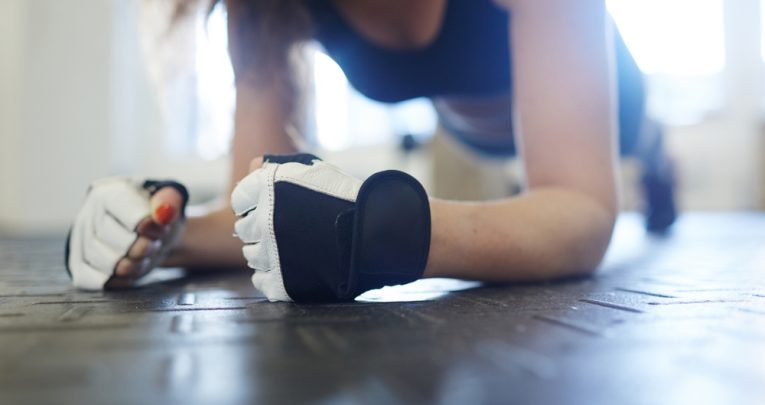Pugilistic Pedagogy – It’s Not Trendy, But One Thing That’s Key to All Kinds of Learning: Repetition, Repetition, Repetition

In the second instalment of his ongoing series on how boxing training is improving his teaching, Lee Simpson reflects on the importance of repetition in learning
- by Lee Simpson

After 4 rounds of sparring, I am just about to experience a conditioning exercise where I complete 50 press ups, followed by 40 sit-ups, followed by 40 press ups, followed by 40 sit-ups, followed by 30 press-ups, followed by 40 sit-ups etc… when I engage in a conversation with Casper.
 Casper, the “friendly” ghost, has been my sparring partner tonight. I have taken a right hook to the ribs from him, which I still feel a day later, and a left hook to the jaw that left me with a sensation like someone was ramming a pretty thick needle into the bone.
Casper, the “friendly” ghost, has been my sparring partner tonight. I have taken a right hook to the ribs from him, which I still feel a day later, and a left hook to the jaw that left me with a sensation like someone was ramming a pretty thick needle into the bone.
As I prepare for the grind of what is about to come, I ask Casper about his opinion on “repetition” as an instructor. He is immediately enthused.
“Mate” he says, “repetition is fundamental. Repetition is affirmation,” he says with the kind of confidence you expect from motivational speakers.
“The more you repeat an action, the better you prepare. The more you repeat an action, the more likely you are to believe that you can do it well when you need to. It’s about confidence,” he says.
I nod in agreement.
“You know,” he goes on, “I bet repetition is seen as really old school, and I bet that frightens teachers ‘cos it’s not, cool, or modern. But they shouldn’t be afraid. Repetition is the best type of preparation. Think about it. How many jabs will you throw at the bags in a session – maybe a hundred? Maybe more? As you practise, your technique improves, and you get faster. The repetition breeds confidence in your abilities. And the confidence breeds success.”
It is also true that an increasing confidence in your ability decreases the anxiety associated with a stressful experience. An experience like getting into a physical confrontation in a boxing ring, or tackling a challenging exam question. The more time I spend boxing, the more I practise my technique, the more confident I become – and the results are visible in my progress.
I have had a similar conversation with Paddy, the Coach at the boxing gym. From his point of view as a teacher, the benefit for his boxing students is in the increased reaction time that consistent repetition provides.
“Repetition equals improved reaction time and that’s key,” he says. “Practice encourages reaction, be it physical or recalling information. We repeat things in order to be able to enact an action, or recall information, more quickly. Perfect practice creates a perfect reaction.” And that is essential for success.
It occurs to me that this applies in our classrooms too – particularly when young people are learning how to tackle challenging exams and deal with the anxiety of exam situations.
And, I think, Casper is right about teachers’ fears too. Many of us trained in a period of time when those in power to judge our efficacy as practitioners would not recognise repeating the same skill, to improve this skill, as valid pedagogy.
We would be challenged by an observer who would admonish us because a child had told them that they had “done” this work last week.
Often, observers didn’t ask us what the outcome of last week’s learning was, or how the students’ abilities in the skills had progressed over the series of lessons. We were simply told that our practice “required improvement” because repeating the same skill meant that the children were not progressing rapidly enough.
This is anathema to me. And, I think, goes against everything that we know about learning. We have to practise to achieve the best outcomes. Learning to box as a novice has shown me again that often the skill we are trying to master does not, in fact, come naturally.
In fact, like moving around in a boxing stance, it may not, at first, seem natural at all. It will require persistent practice to perfect. How often do teachers hear students tell us that they, “don’t get it”, “can’t do it” or “can’t remember it”. There is no Matrix-style solution to this problem.
Unlike in the the film, we can’t just plug the information or training directly into our, or our students’, cerebrums and go from novice to master in 10 seconds. There is only hard work.
This is reinforced by Dominic Salles, Director of Learning at Chipping Campden School, in his excellent book, “The Slightly Awesome Teacher” where repetition, persistence and concentration are identified as some of the key qualities exhibited by students who performed well in exams.
When interviewing students who had achieved significantly more highly than their predicted performance level, regardless of ability profile, it became clear to Salles that repetition had been a key strategy for success.
Those who had performed more highly than their predictions in examinations, “wrote revision cards so that they and others could keep testing them” and “used past papers relentlessly, retesting themselves on any questions they found difficult.”
Students who deliberately repeated strategies in order to commit knowledge to memory, and apply this knowledge in an exam context, were the most successful.
So, what am I saying. Well, it’s the hard way for us. The only way that really works. As they say, practise makes perfect, so we need to embrace “repetition” as the key to success.
Well, that’s it for the fistic facts this week colleagues and friends. I can hear Paddy shouting, “Come on you animals, I can’t see you sweat – so get your noses down onto the canvas and feel the burn!”
I already feel the burn – everywhere! But practise makes perfect, so I push myself to begin.
Wish me luck!
Lee Simpson is director of learning and strategic partnerships at Denefield School, and secondary programme lead for the Berkshire Teaching Alliance. He trains at Fitzpatrick’s Boxing Gym in Swindon.











